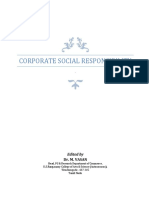0 ratings0% found this document useful (0 votes)
15 viewsChapter Page 84 To87
Chapter Page 84 To87
Uploaded by
Jomel AndradeCopyright:
© All Rights Reserved
Available Formats
Download as PDF or read online from Scribd
Chapter Page 84 To87
Chapter Page 84 To87
Uploaded by
Jomel Andrade0 ratings0% found this document useful (0 votes)
15 views2 pagesOriginal Title
chapter page 84 to87
Copyright
© © All Rights Reserved
Available Formats
PDF or read online from Scribd
Share this document
Did you find this document useful?
Is this content inappropriate?
Copyright:
© All Rights Reserved
Available Formats
Download as PDF or read online from Scribd
Download as pdf
0 ratings0% found this document useful (0 votes)
15 views2 pagesChapter Page 84 To87
Chapter Page 84 To87
Uploaded by
Jomel AndradeCopyright:
© All Rights Reserved
Available Formats
Download as PDF or read online from Scribd
Download as pdf
You are on page 1of 2
caper "he Copan mee tn Exerson
chang Roper
INTRODUCTION
‘The corporate image exists inthe minds of people. I ie a
loose structure ofknowiedge, belie, and feling It may be
vague or clear, weak or strong I differs fiom person 10
person, ftom company to company In pati s based on
facts and figures, such as a company’ sales volume, its
rodvct activites, the amount of its profits, the price of is
Stock, the location ofits plants, and 80 fort, Additionally,
itis rooted in variety of socal atitdes and value systems
Which people eamy in their minds, The eomponte image,
then, may be defined as © composite of knowledge,
fecling, ideas, and belies associated with «company a5 4
result ofthe totality of is activities.
United States corporations have invested huge sums of
‘money o project their unique characters or persons to
the American public in an effort to show dramatically that
they are more than organizations 10 produce goods and
services. This effort on the part of lee comportions to
Project favorable image tothe public has only come into
Prominence during the last two decades. Initially, before
‘he huge corporations came upon the scene, most products
curtied the owner's othe company’s name. Most of the
advertising of products consisted ofa picture of the factory,
‘or ofthe company’s founder, and an “netutional” message
indicating that the product was superior because’ the
particular manufacturer was responsible for producing it
AAs the tempo of marketing increased, 36- products
‘uid, it became important for names t0 stand out
clearly and be easily and quickly pronounceable and
‘identifiable. In response to this, brand names replaced
those of men or even companies.
During the depression of the’ 1930"s, when established
values and loyalties “were being” Comoded, many
Corporate Sal Rpt and God Governance a
caer ‘Phe ope mae An crnion
me “7 Cangas
manufictures abandoned personal or company names
completely and promoted their products and their brands
with no attempt to identify them withthe company that
Produced them, It was fet ha the consumer eared nothing.
shout the isttution behind the product as long as the
prove tse andthe price were satsfctry
Promoting of corporate images reached 2 low point during
‘the 1930's. During the past twenty years thre has been an
increasing tendency tote prominent brands a corporate
identity, This reversal quickened during World War I
when producers who were making war materials sought to
Toaintain their reputation in the marketplace aliough no
longer producing consumer goods.
‘The development of corporate images during the past two
decades was furthered by the growth of great industrial
complexes. Businesses have sought diversification and
hhave merged with ober companies. This process and
advanced technology have rested in fewer differences
between competitors of competitive products. With
competing products also often becoming nearly identical,
‘many companies -parcularly in the consumer goods field
have ft thatthe product teelf sa relatively mor factor
‘in sales and that outside factors such as the reputation and
integrity ofits producer may frequently be decisive.
Finally, the emergence ofthe super-corporation has crested
social and sociological problems related to ther size and
complexity rather than simply” to the selling of their
products, Beause of these problems, super-corporations
Ihave flt a considerable need for projecting their image
favorably to varions groups in the population, to
stockholders and investors, legislators, civic leaders, labor,
college and high school students who may be induced 9
‘work fr them, educators, engineers, and a hos of others in
Coporat Sock Respond Good Governance 8s
coer ‘he Certs Inges dn Ege
‘Fonte Rope
adshion hose ity ons wih omen
‘buying or using their products, a
‘This pe soe of ip lveintng the own
Inredats “Coponts"nonagenes eg
‘eid fo ji ie i mf doe poses of
tater ha by appeal othe mui The corporation In
een as gi of een
sit ithe reseed fr pois wt hee
Scesiom dens “auved economic le! The
Perea ron of hoe toca ees
{tet ting dese towed ings comport mage aad
‘semors deine whe hs natn te
rt coparn' epee f ha pons
tejod the ott mative. We sould lum someting of
‘hat motte and snot corpora ever fo hat
corona thems ty 1 ll the Wot, about
‘orforte ropontitn
The ft secon of this pane wil ete he varios
Son piso sues how» noi
‘Stone nage cn infos eho the gow Tice
‘temp il be mete dtemine vedere weed
enioa bong, pal © ths iags nage
Comoriom it "an ineston of ingeed on!
reapoesbilty, sony bend prot mate.
In the second section, 1 wil describe the development of
‘measurement systems designed specially forthe purpose
of providing management with 2 precise knowledge of
poration’. personality. In this connection, an aiempt
‘gain will be mado to detemine whether this development
suggests growing responsibility to socal fres other than
BEES growing esponsiity forces oe th
Copart Sia Rept a ond Gerrans 86
cert 1h opt Ine An Exe
cheng Rooms
‘The final setion will summarize my findings a state any
general conclusions which canbe dawn fom this esearch
4.1 CORPORATE IMAGES FOR
CORPORATE “PUBLICS”
Peter Drucker sees the essence and purpose of the
corporation “not in is economic performance or in its
formal rules, but in the human relationships both between
the “members of the corperation and between the
corportion and the citizens outside of”
“The modem corporation isan instrument for conducting a
profitable business enterprise through the pooling of
Yenture capital, Stress on this fact argues that the Beard of
Directors" prime responsibilty isto retum a profit onthe
investment, that all other responsibilities are purely
fecondary, Ine now famous debate between the late
Professor E, Merrick Dodd and Professor A, A. Berle over
‘wen years ago, Berle did argue that corporate powers
‘were. powers in inst for stockholders. Dodd insisted,
however, that these powers were held in trast forthe entire
commeniy. And ia "The 20th Century Capitalist
Revolution,” Berle conceded tat Professor Dodd had won.
the argument. Berle does not admit that Dodd was right all,
‘long, but concedes that socal fact and judicial decisions
rade Dodd's version a reality.
Looking at Dodd's argument, we find that he was taking
shout the trends of public opinion of that pesiod as they
‘ected the law of corporations, Dodd stated that lawyers
had assumed that corporste managers must conduct the
Corporat insiution with single-minded devotion to
‘Stockholder profit, That assumption, he said, was based on
Conor Social Reply and Good Gavernonce 87
You might also like
- The Subtle Art of Not Giving a F*ck: A Counterintuitive Approach to Living a Good LifeFrom EverandThe Subtle Art of Not Giving a F*ck: A Counterintuitive Approach to Living a Good LifeRating: 4 out of 5 stars4/5 (5943)
- The Gifts of Imperfection: Let Go of Who You Think You're Supposed to Be and Embrace Who You AreFrom EverandThe Gifts of Imperfection: Let Go of Who You Think You're Supposed to Be and Embrace Who You AreRating: 4 out of 5 stars4/5 (1108)
- Never Split the Difference: Negotiating As If Your Life Depended On ItFrom EverandNever Split the Difference: Negotiating As If Your Life Depended On ItRating: 4.5 out of 5 stars4.5/5 (888)
- Hidden Figures: The American Dream and the Untold Story of the Black Women Mathematicians Who Helped Win the Space RaceFrom EverandHidden Figures: The American Dream and the Untold Story of the Black Women Mathematicians Who Helped Win the Space RaceRating: 4 out of 5 stars4/5 (926)
- Grit: The Power of Passion and PerseveranceFrom EverandGrit: The Power of Passion and PerseveranceRating: 4 out of 5 stars4/5 (598)
- Shoe Dog: A Memoir by the Creator of NikeFrom EverandShoe Dog: A Memoir by the Creator of NikeRating: 4.5 out of 5 stars4.5/5 (545)
- The Hard Thing About Hard Things: Building a Business When There Are No Easy AnswersFrom EverandThe Hard Thing About Hard Things: Building a Business When There Are No Easy AnswersRating: 4.5 out of 5 stars4.5/5 (354)
- Elon Musk: Tesla, SpaceX, and the Quest for a Fantastic FutureFrom EverandElon Musk: Tesla, SpaceX, and the Quest for a Fantastic FutureRating: 4.5 out of 5 stars4.5/5 (476)
- Her Body and Other Parties: StoriesFrom EverandHer Body and Other Parties: StoriesRating: 4 out of 5 stars4/5 (831)
- The Emperor of All Maladies: A Biography of CancerFrom EverandThe Emperor of All Maladies: A Biography of CancerRating: 4.5 out of 5 stars4.5/5 (274)
- The Little Book of Hygge: Danish Secrets to Happy LivingFrom EverandThe Little Book of Hygge: Danish Secrets to Happy LivingRating: 3.5 out of 5 stars3.5/5 (419)
- The World Is Flat 3.0: A Brief History of the Twenty-first CenturyFrom EverandThe World Is Flat 3.0: A Brief History of the Twenty-first CenturyRating: 3.5 out of 5 stars3.5/5 (2272)
- The Yellow House: A Memoir (2019 National Book Award Winner)From EverandThe Yellow House: A Memoir (2019 National Book Award Winner)Rating: 4 out of 5 stars4/5 (99)
- Devil in the Grove: Thurgood Marshall, the Groveland Boys, and the Dawn of a New AmericaFrom EverandDevil in the Grove: Thurgood Marshall, the Groveland Boys, and the Dawn of a New AmericaRating: 4.5 out of 5 stars4.5/5 (270)
- The Sympathizer: A Novel (Pulitzer Prize for Fiction)From EverandThe Sympathizer: A Novel (Pulitzer Prize for Fiction)Rating: 4.5 out of 5 stars4.5/5 (122)
- Team of Rivals: The Political Genius of Abraham LincolnFrom EverandTeam of Rivals: The Political Genius of Abraham LincolnRating: 4.5 out of 5 stars4.5/5 (235)
- A Heartbreaking Work Of Staggering Genius: A Memoir Based on a True StoryFrom EverandA Heartbreaking Work Of Staggering Genius: A Memoir Based on a True StoryRating: 3.5 out of 5 stars3.5/5 (232)
- Top 70 Retail Companies in The Philippines 2023Document2 pagesTop 70 Retail Companies in The Philippines 2023Jomel Andrade67% (3)
- On Fire: The (Burning) Case for a Green New DealFrom EverandOn Fire: The (Burning) Case for a Green New DealRating: 4 out of 5 stars4/5 (75)
- The Unwinding: An Inner History of the New AmericaFrom EverandThe Unwinding: An Inner History of the New AmericaRating: 4 out of 5 stars4/5 (45)
- Chapter III Symbol SystemDocument5 pagesChapter III Symbol SystemJomel AndradeNo ratings yet
- Corporate - Social - Responsibility DR. M VASAN PDFDocument107 pagesCorporate - Social - Responsibility DR. M VASAN PDFJomel AndradeNo ratings yet
- 5 Level of EntrepreneurDocument2 pages5 Level of EntrepreneurJomel AndradeNo ratings yet
- Chapter III W1 Symbol System (Jomel Andrade)Document2 pagesChapter III W1 Symbol System (Jomel Andrade)Jomel AndradeNo ratings yet
- Chapter III Techniques in Improving Ones Non Verbal Communication Skills in The WorkplaceDocument13 pagesChapter III Techniques in Improving Ones Non Verbal Communication Skills in The WorkplaceJomel AndradeNo ratings yet














































